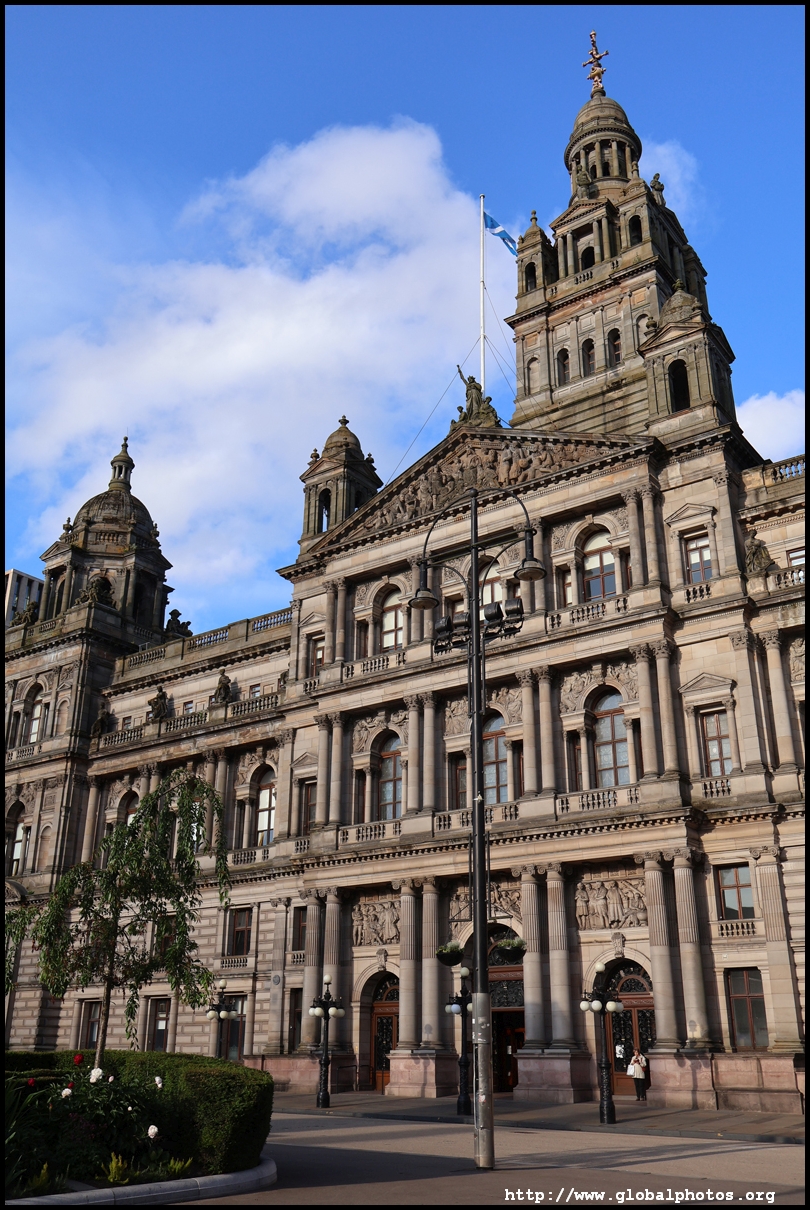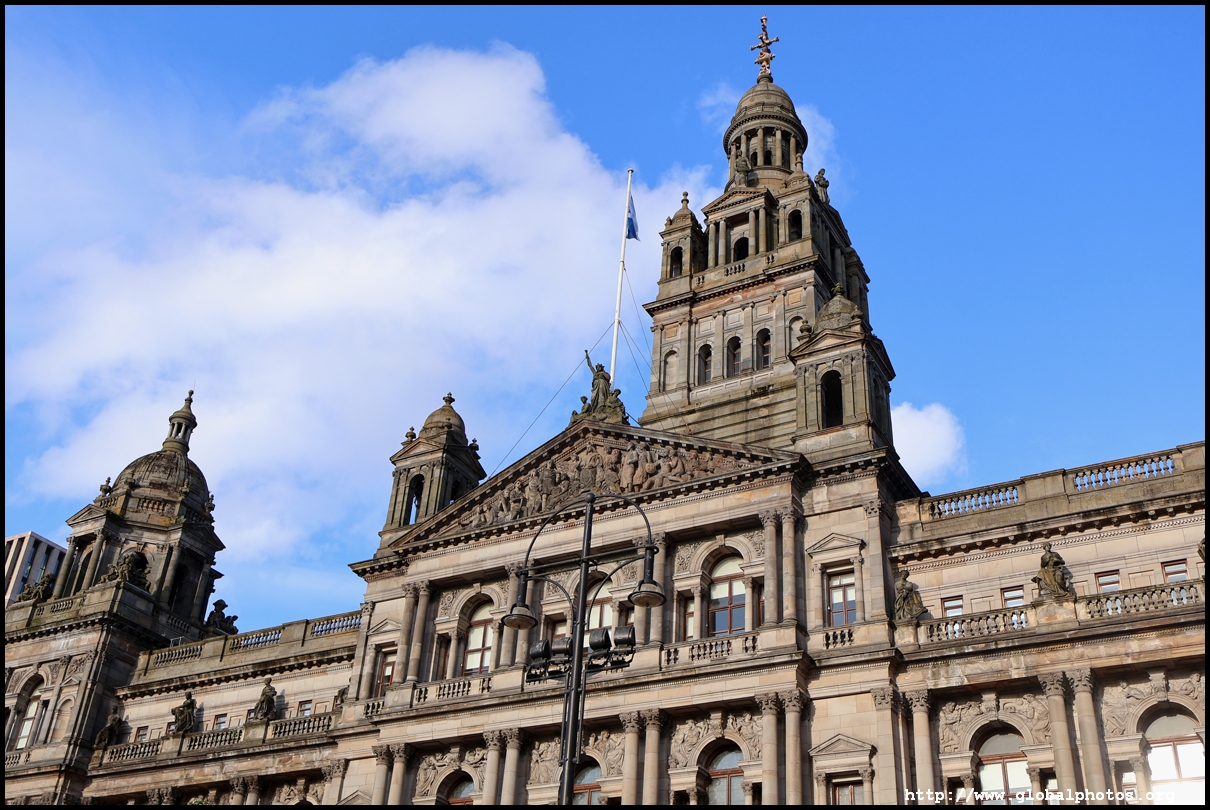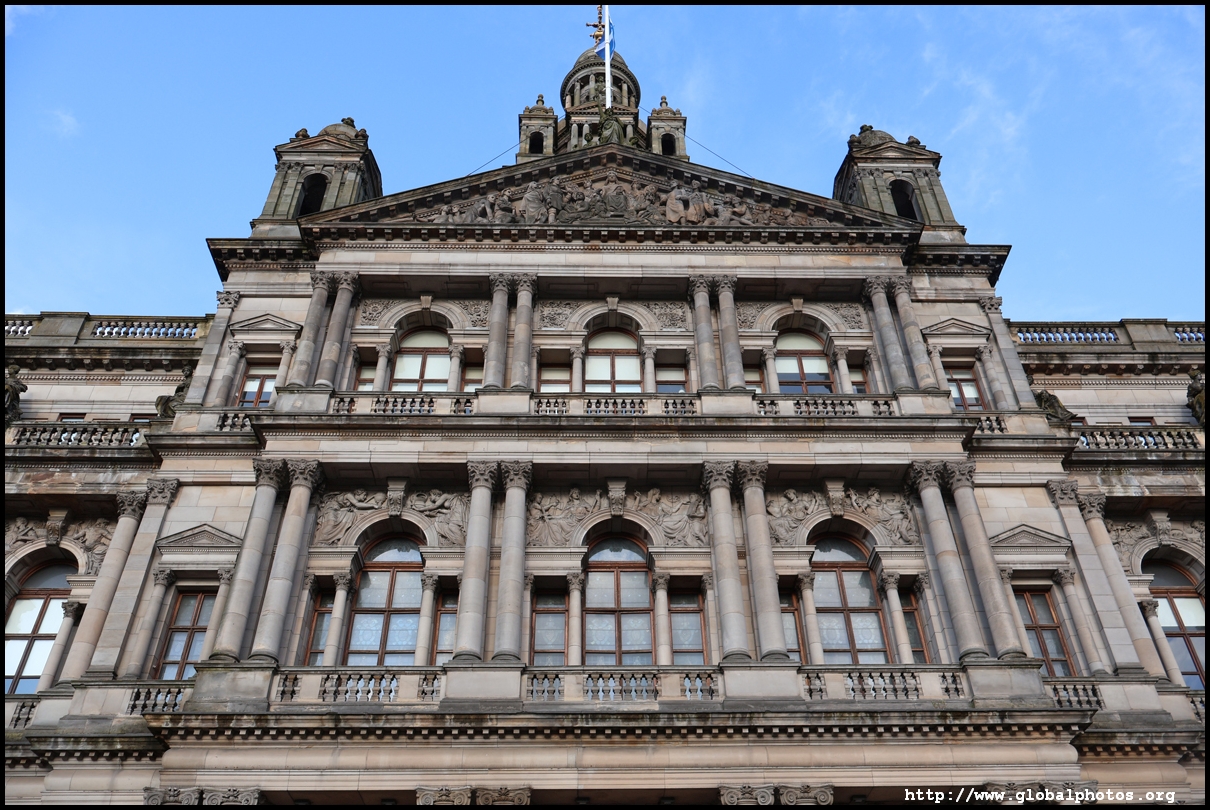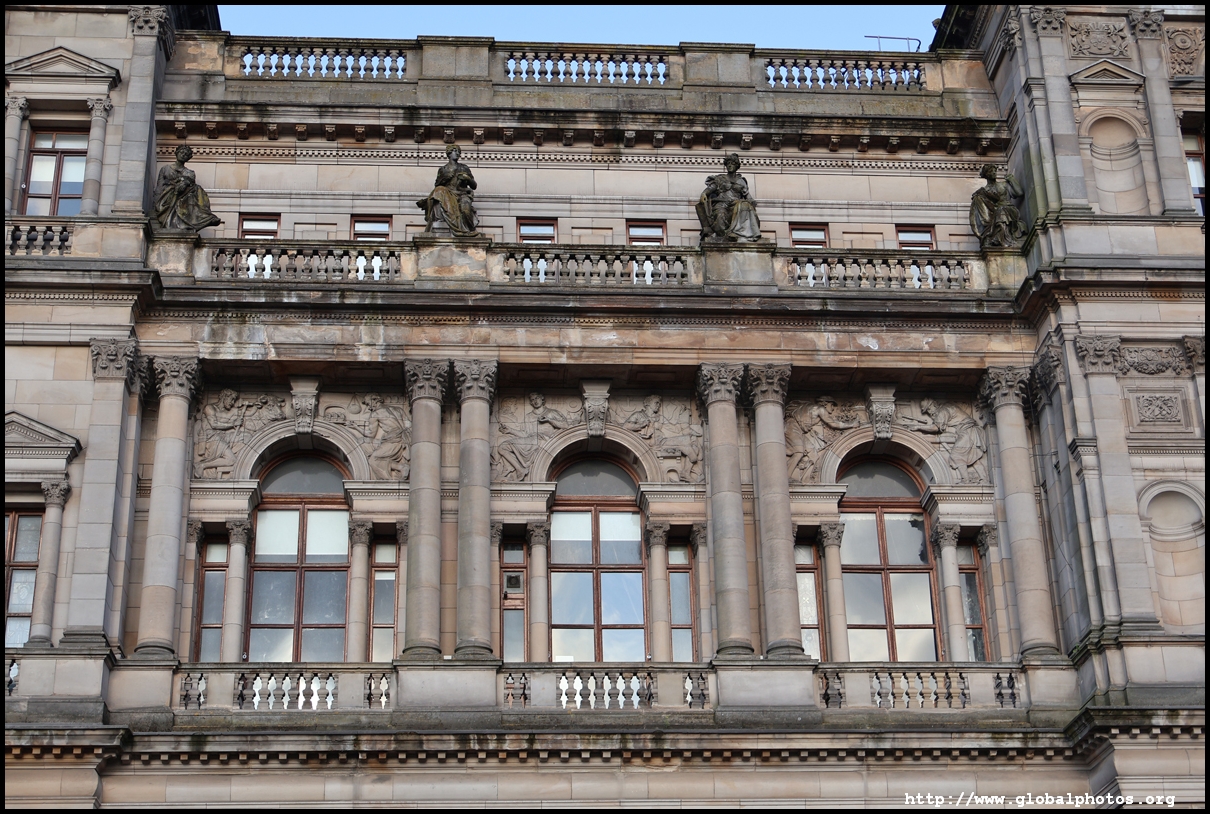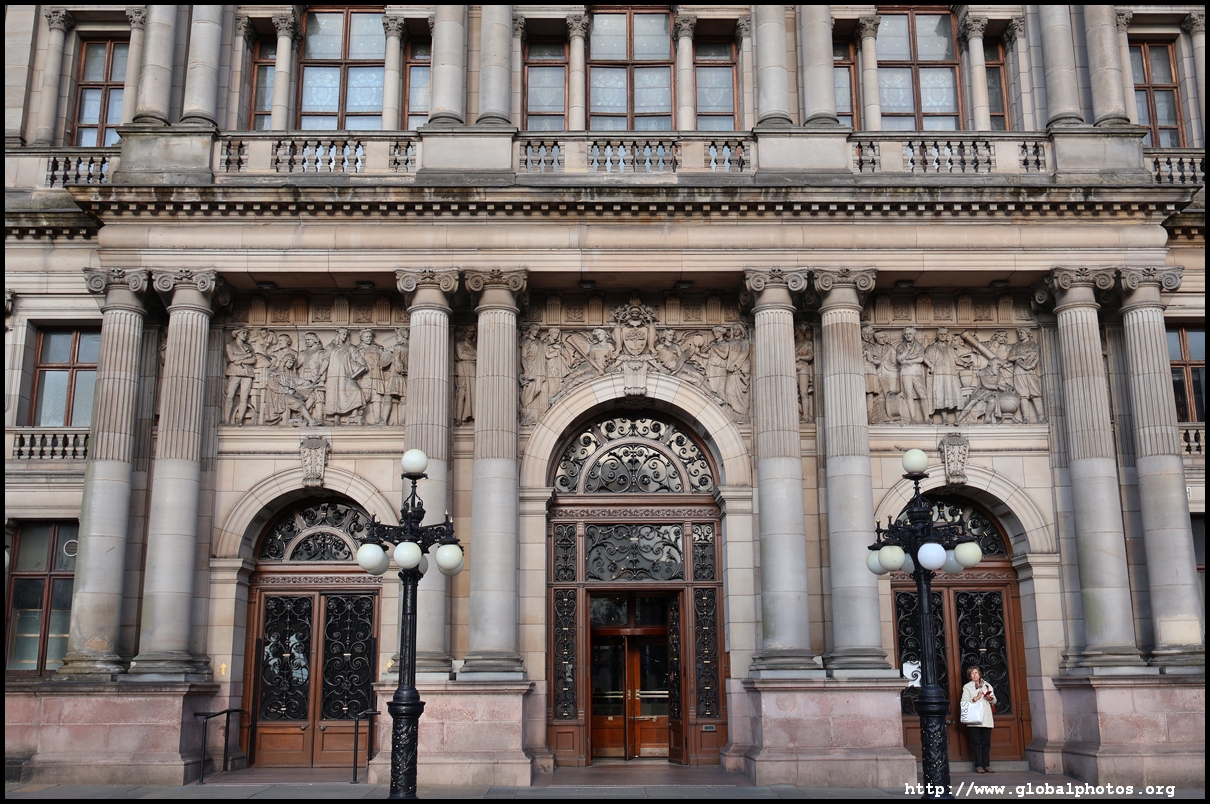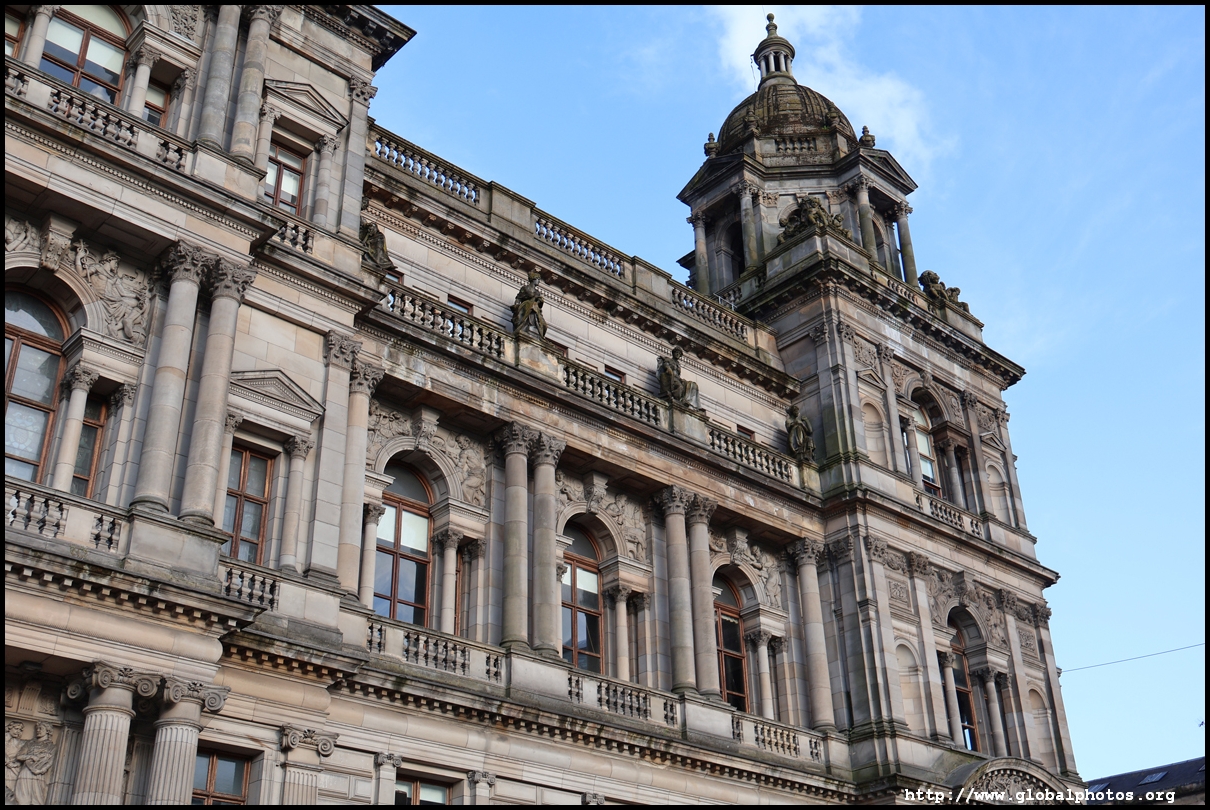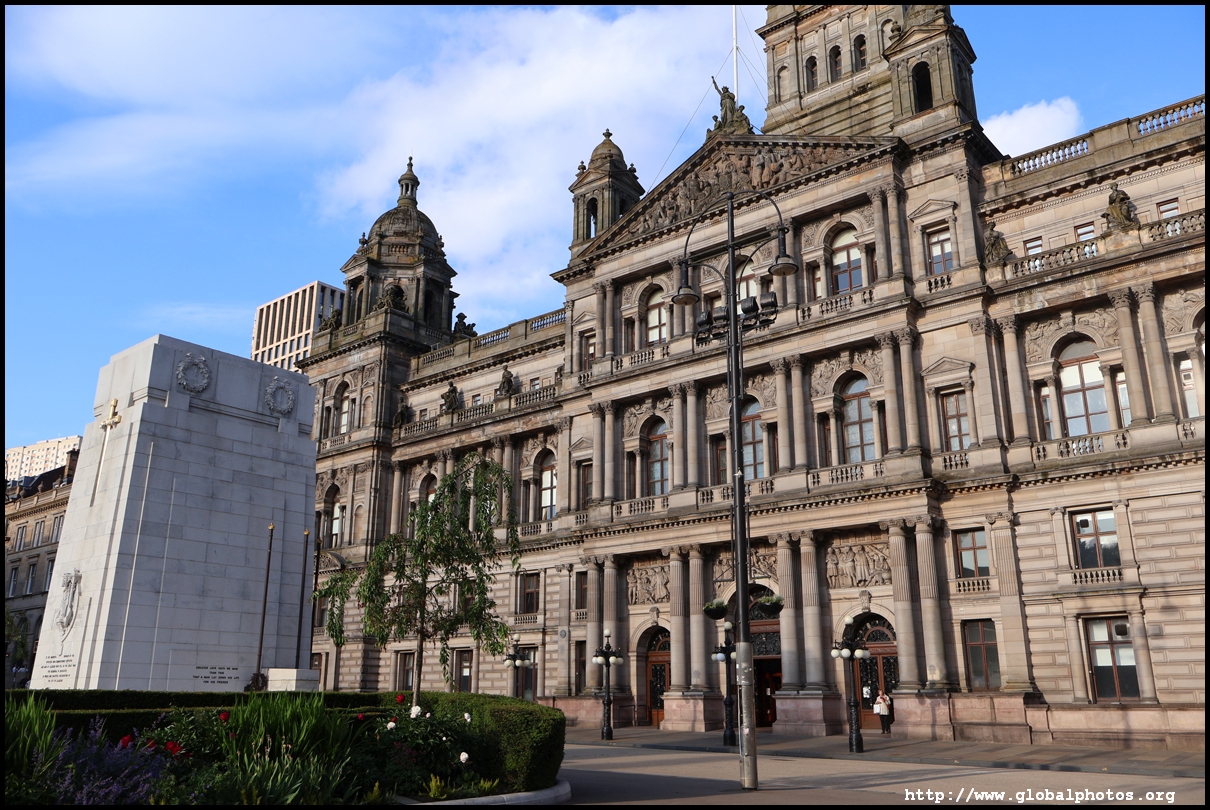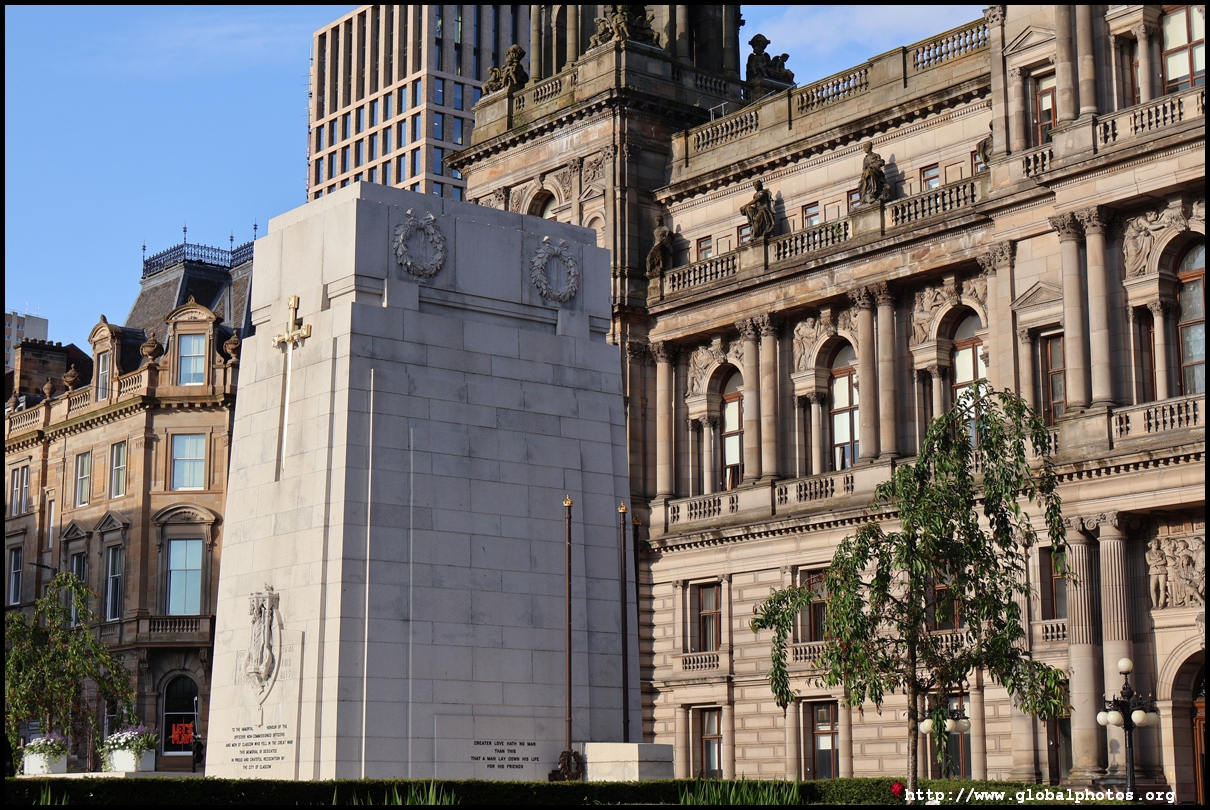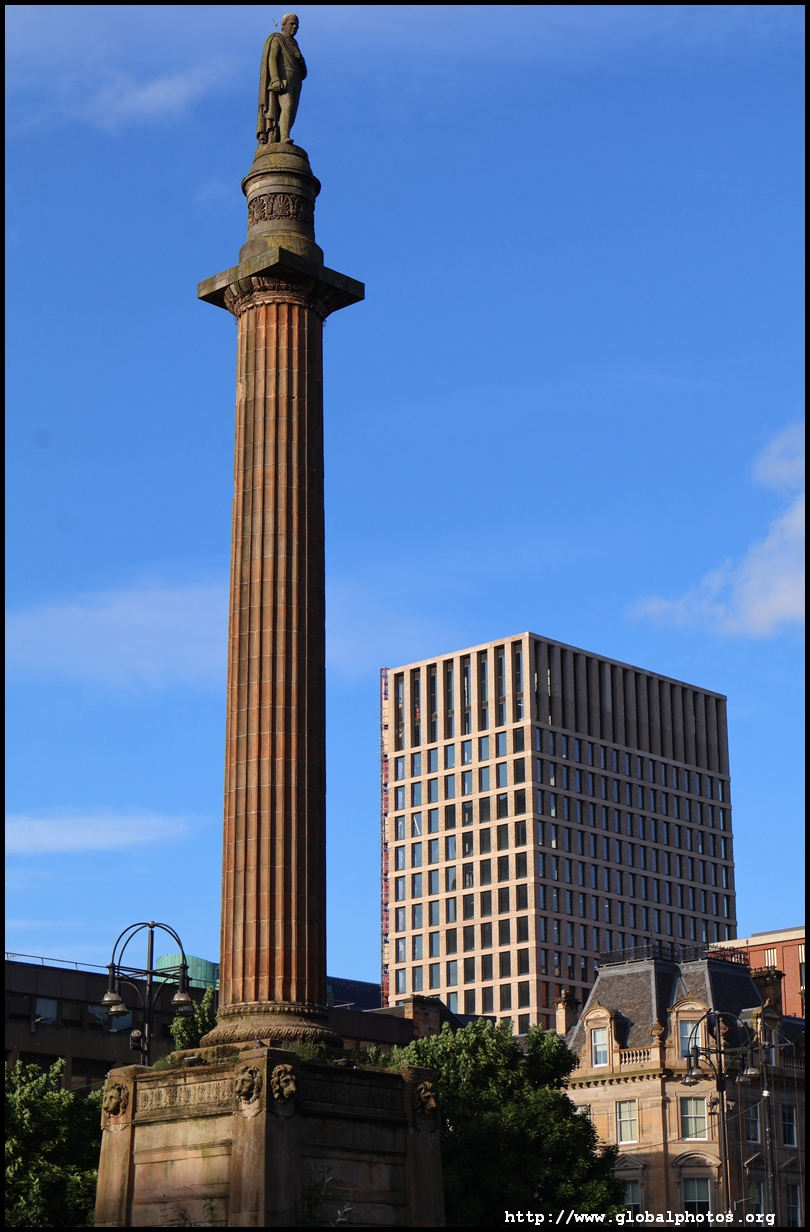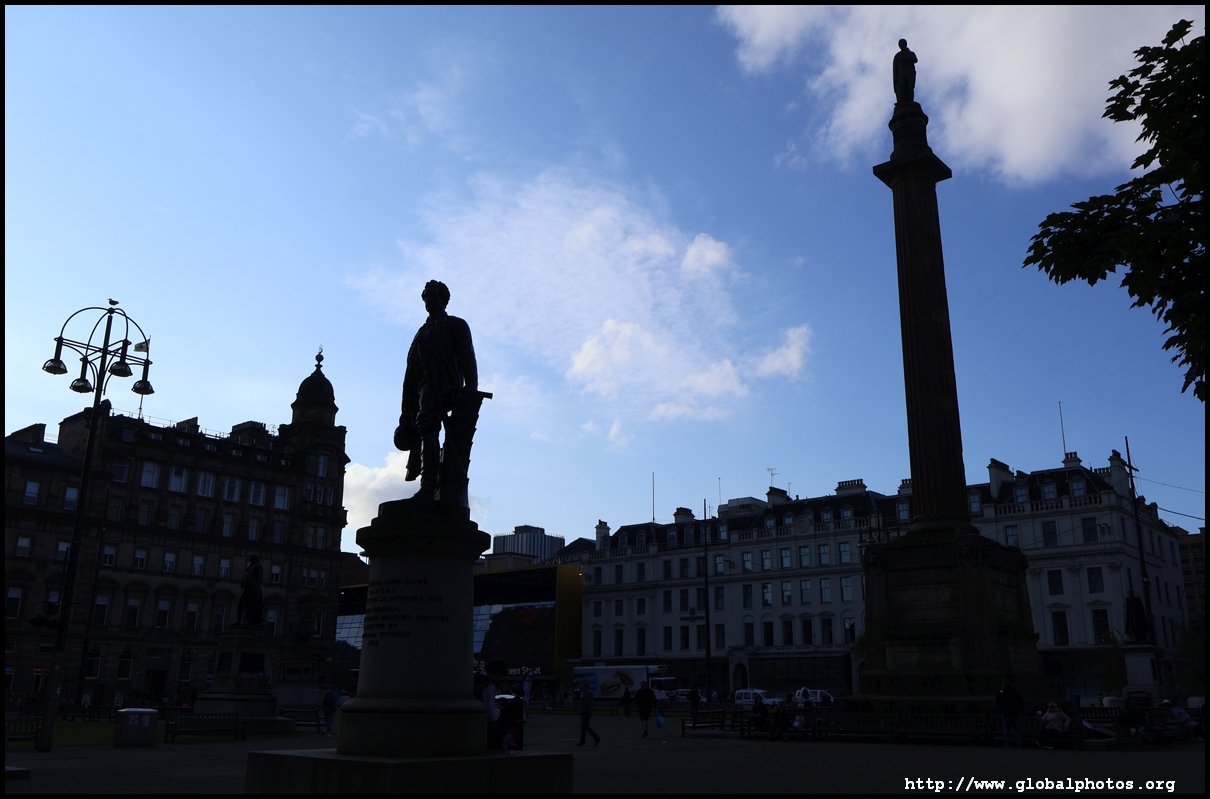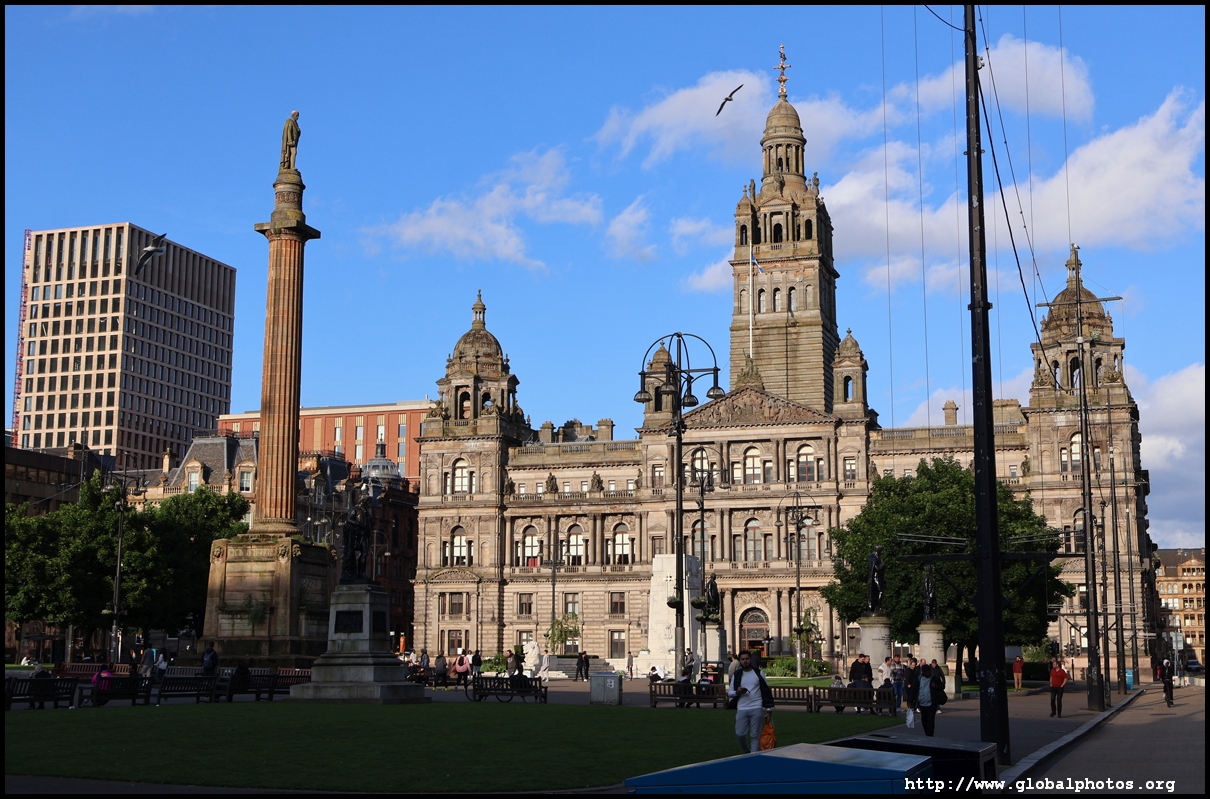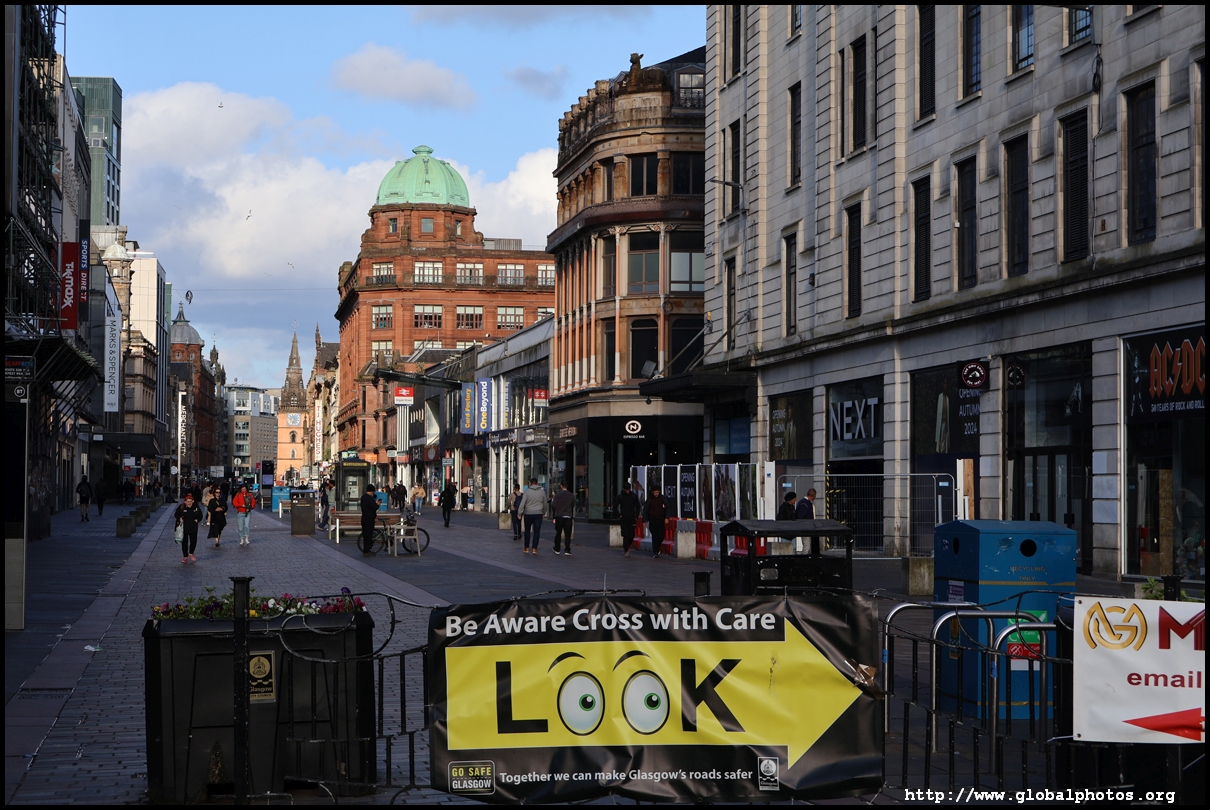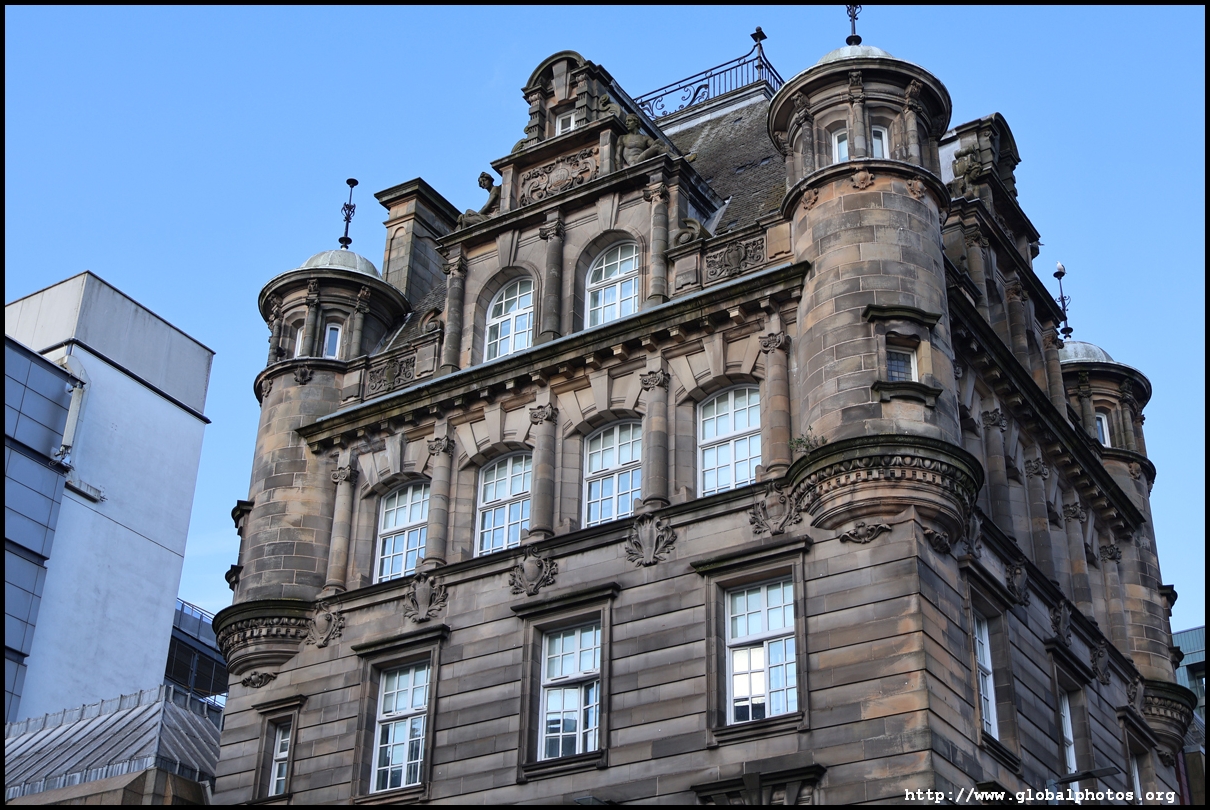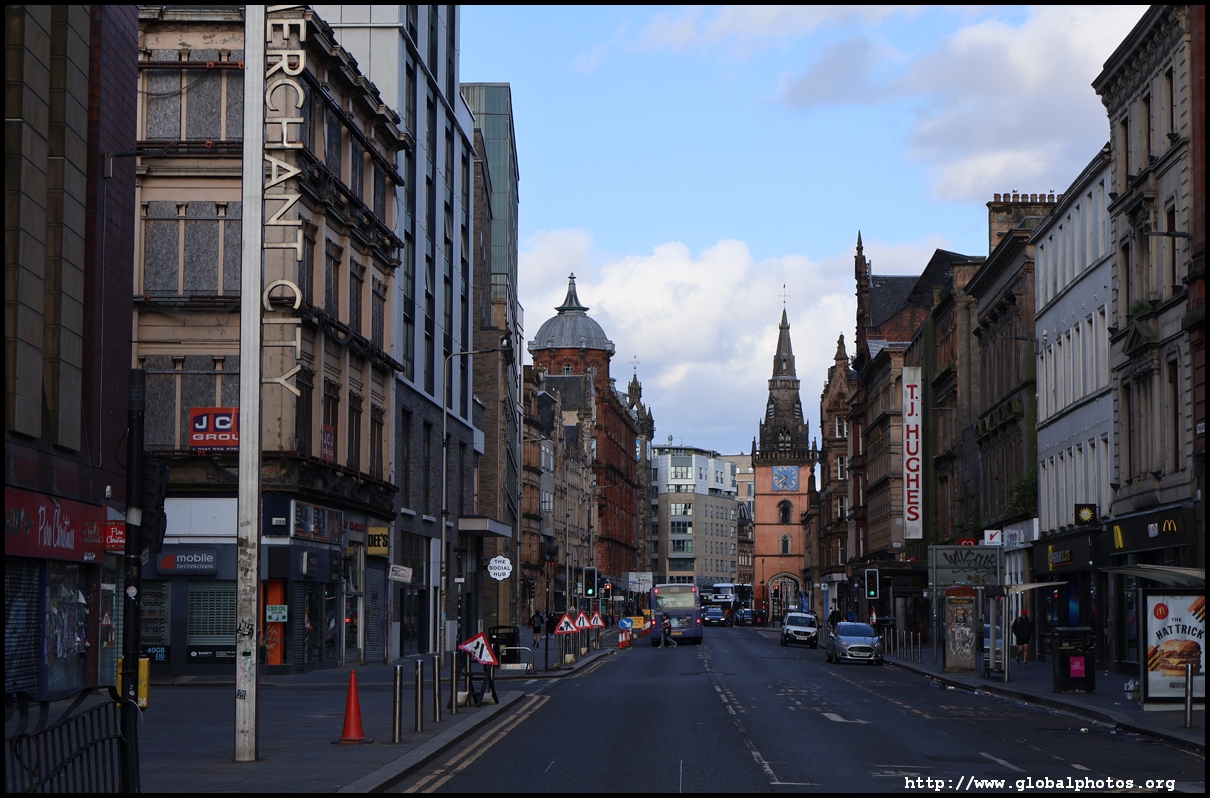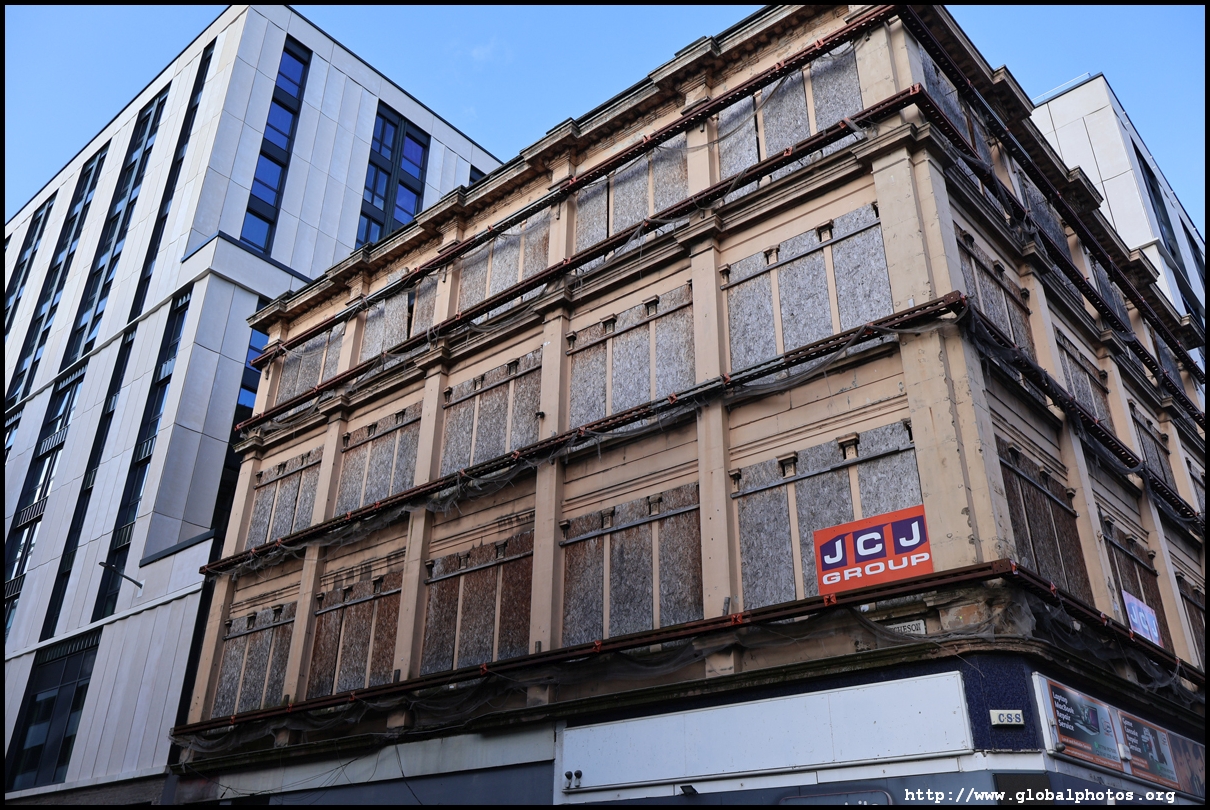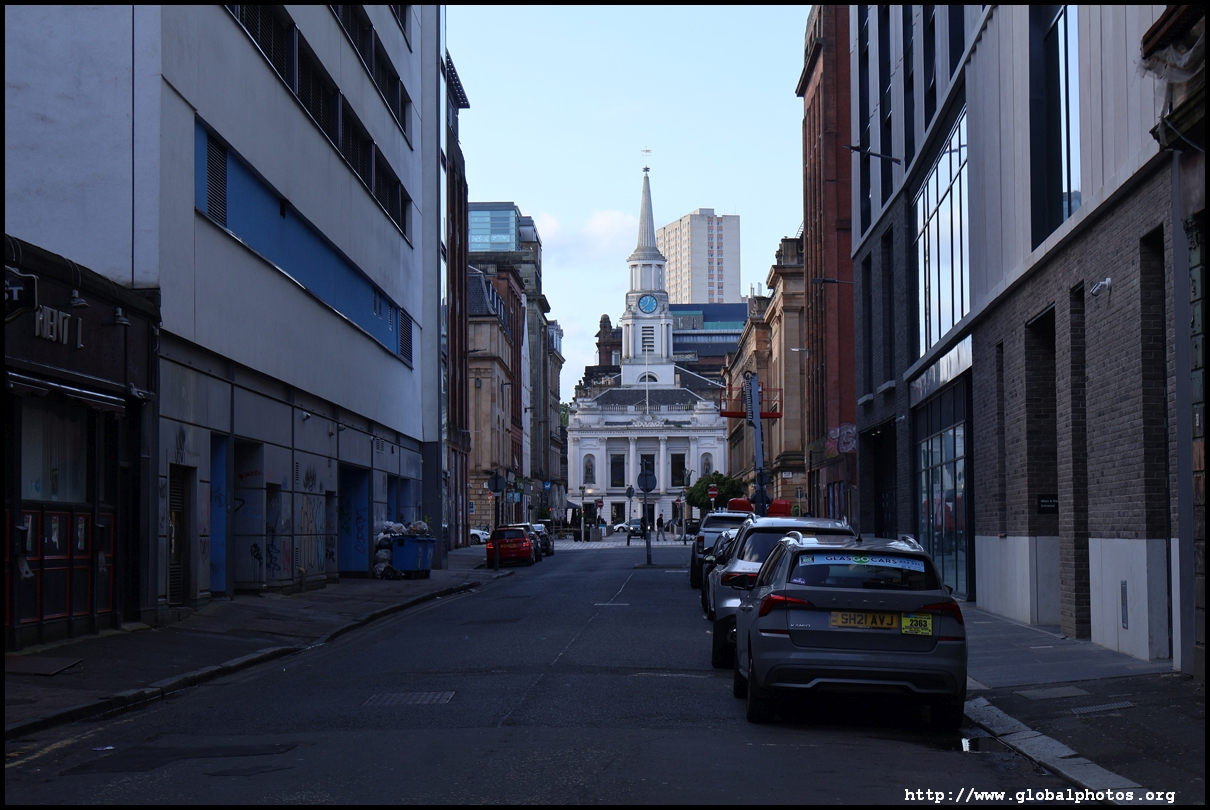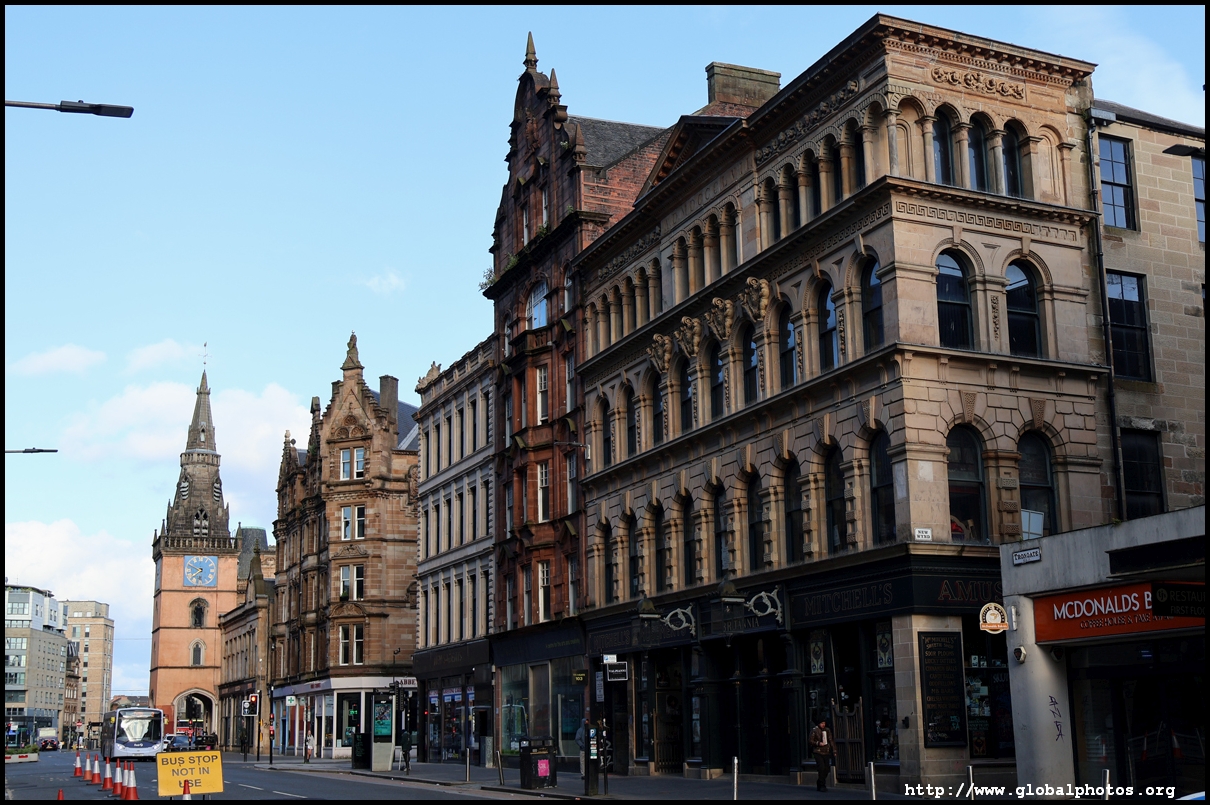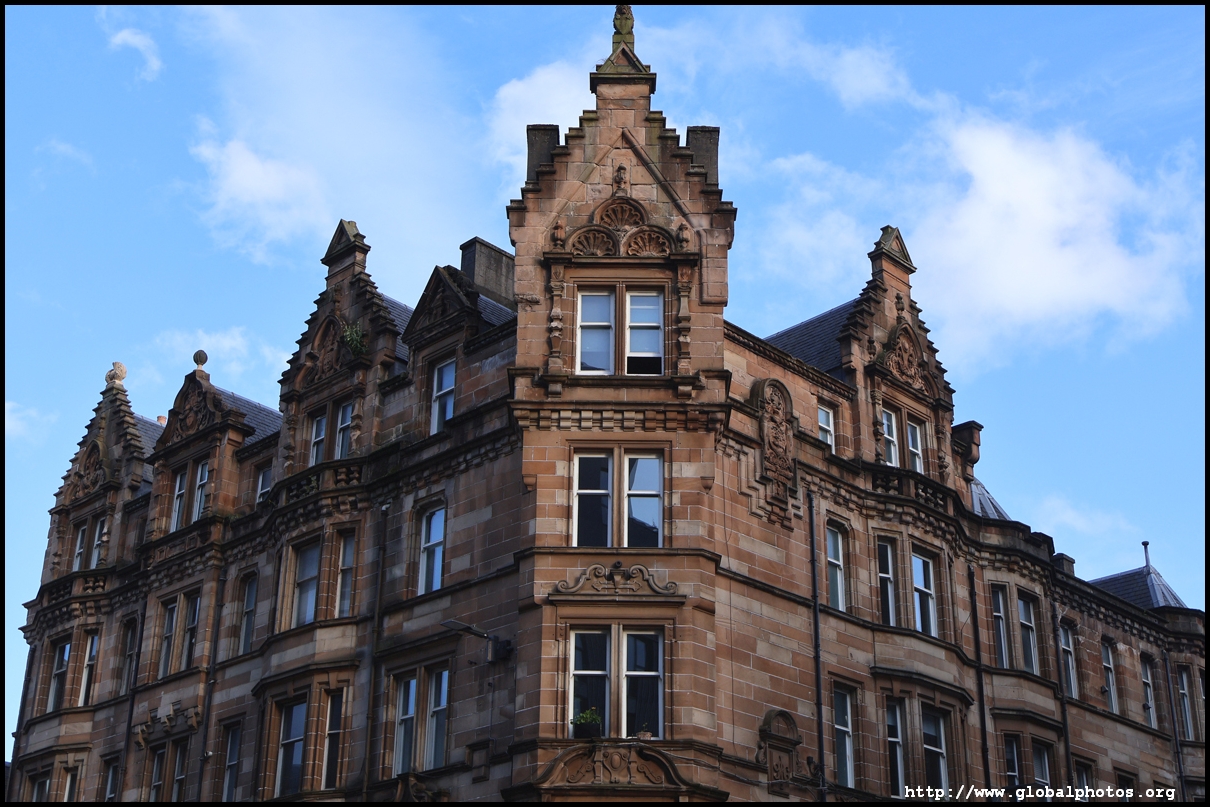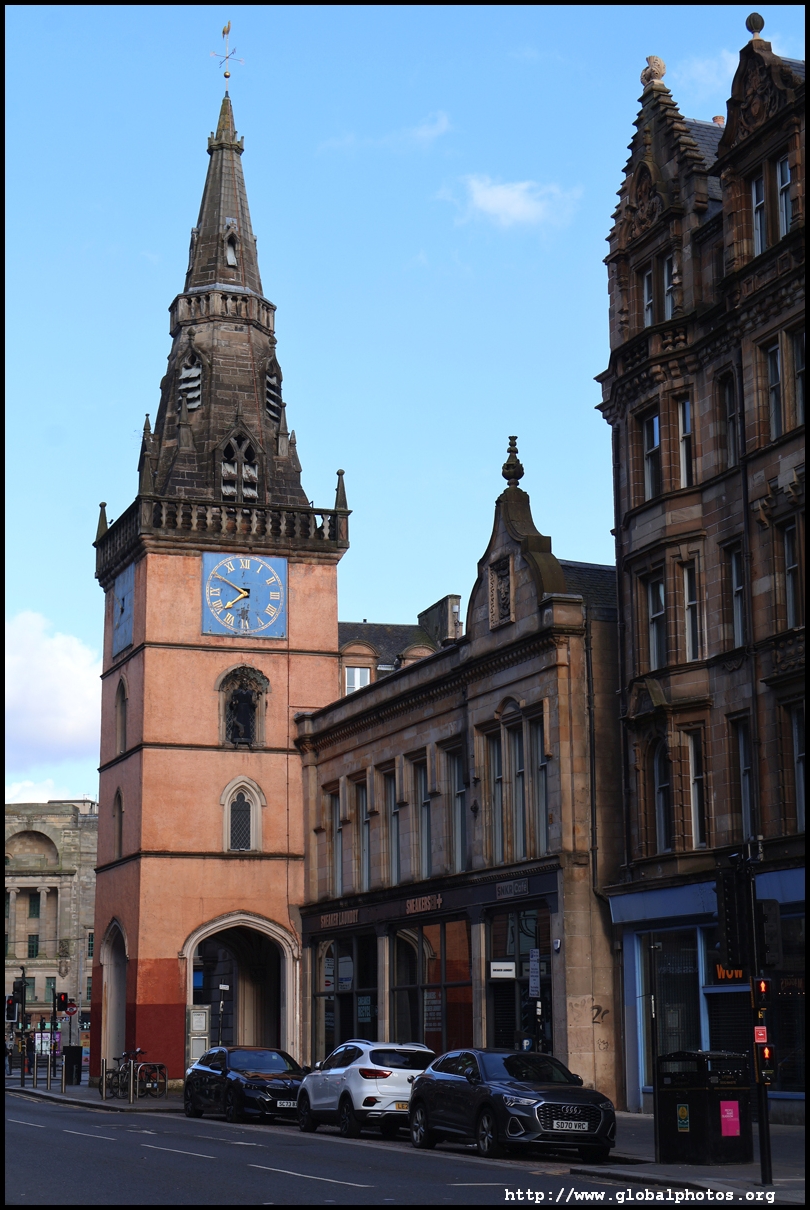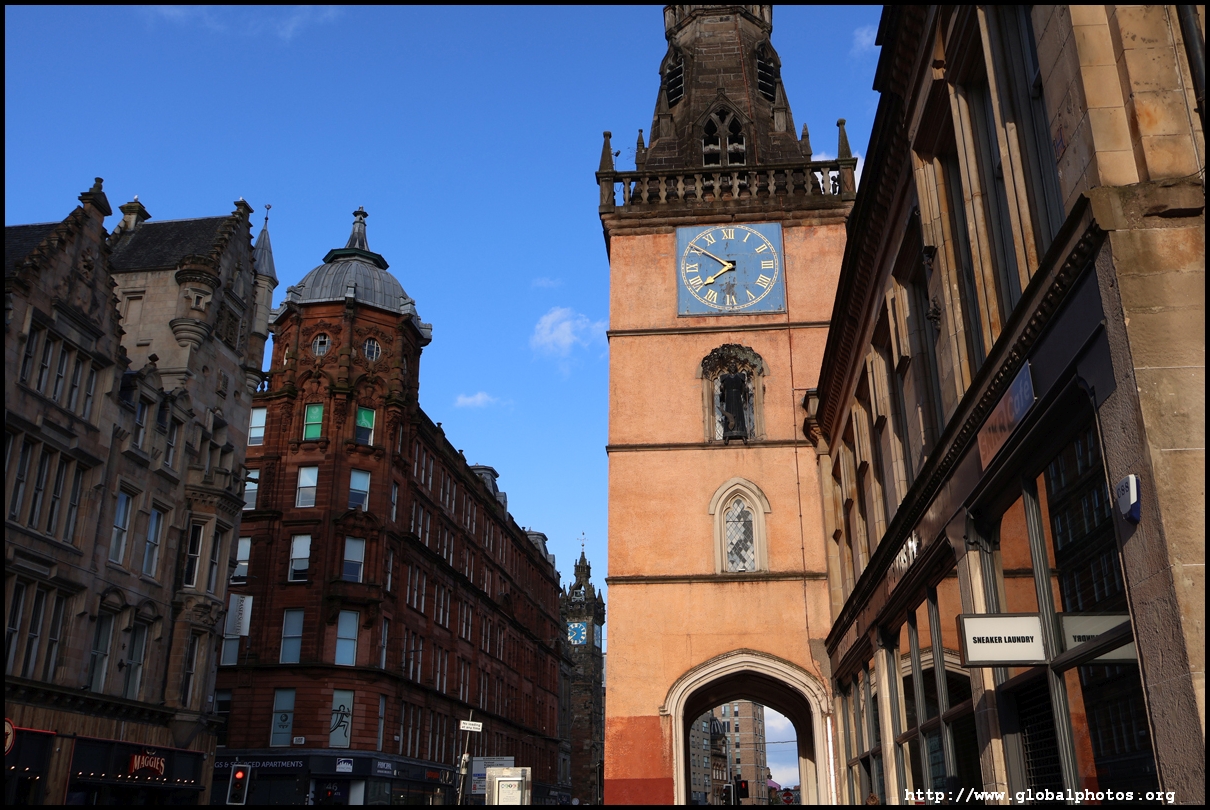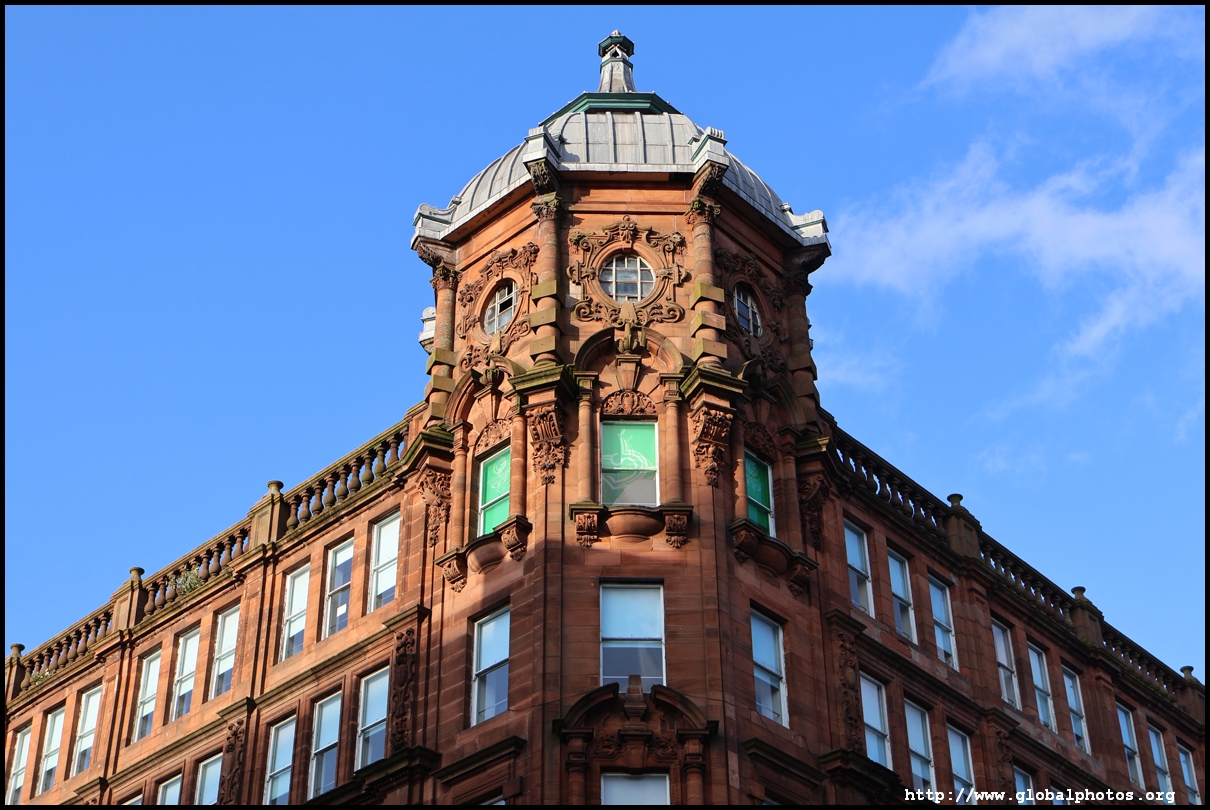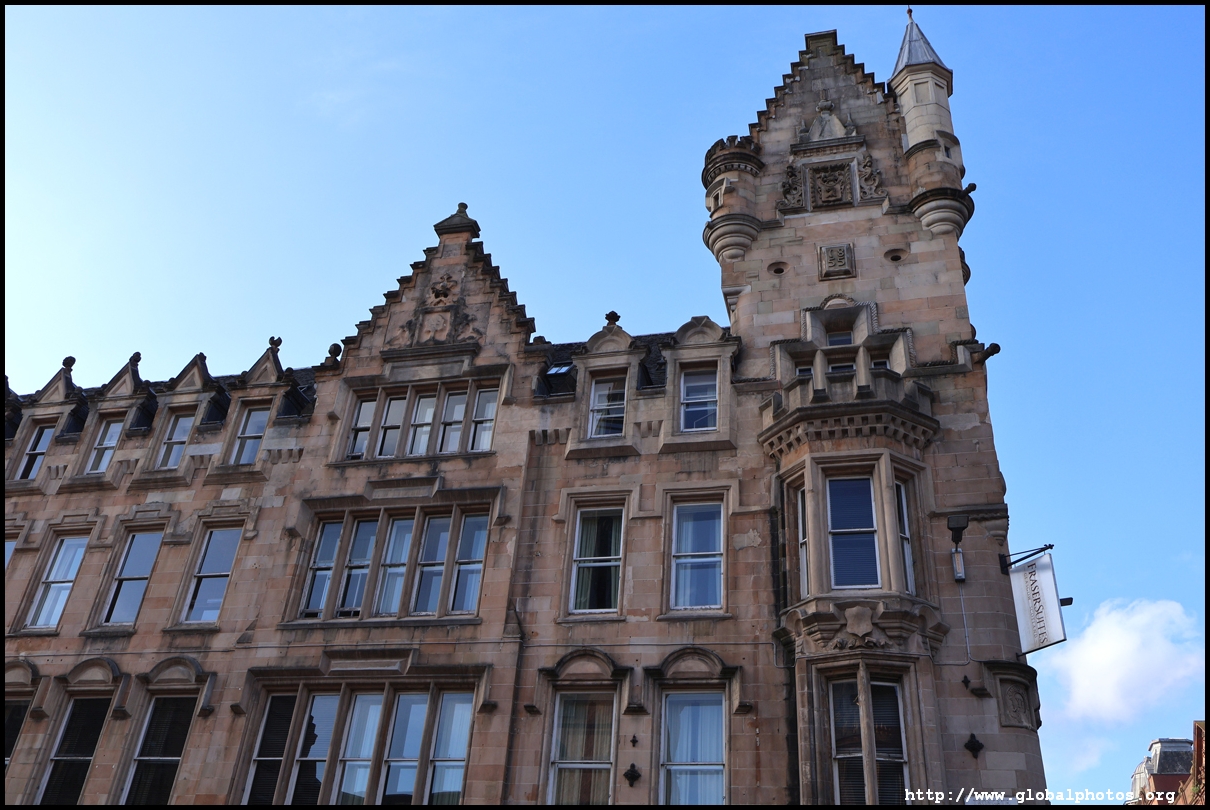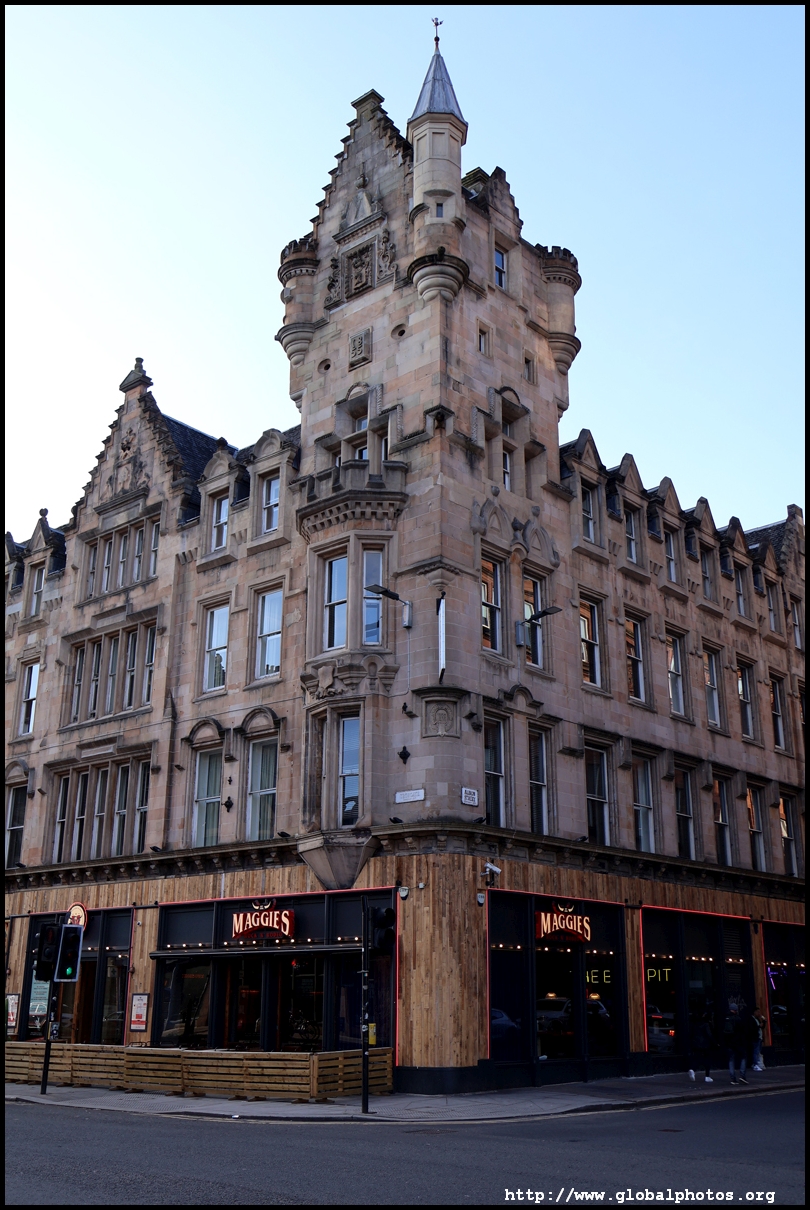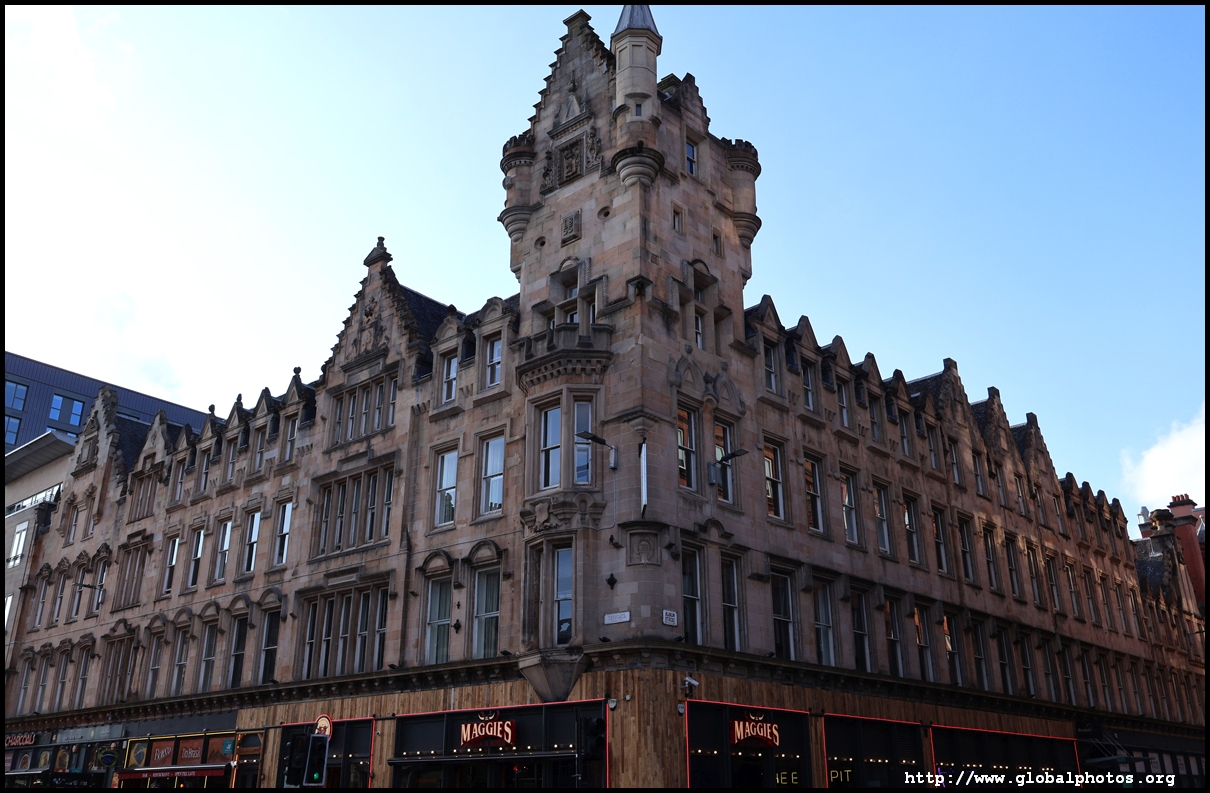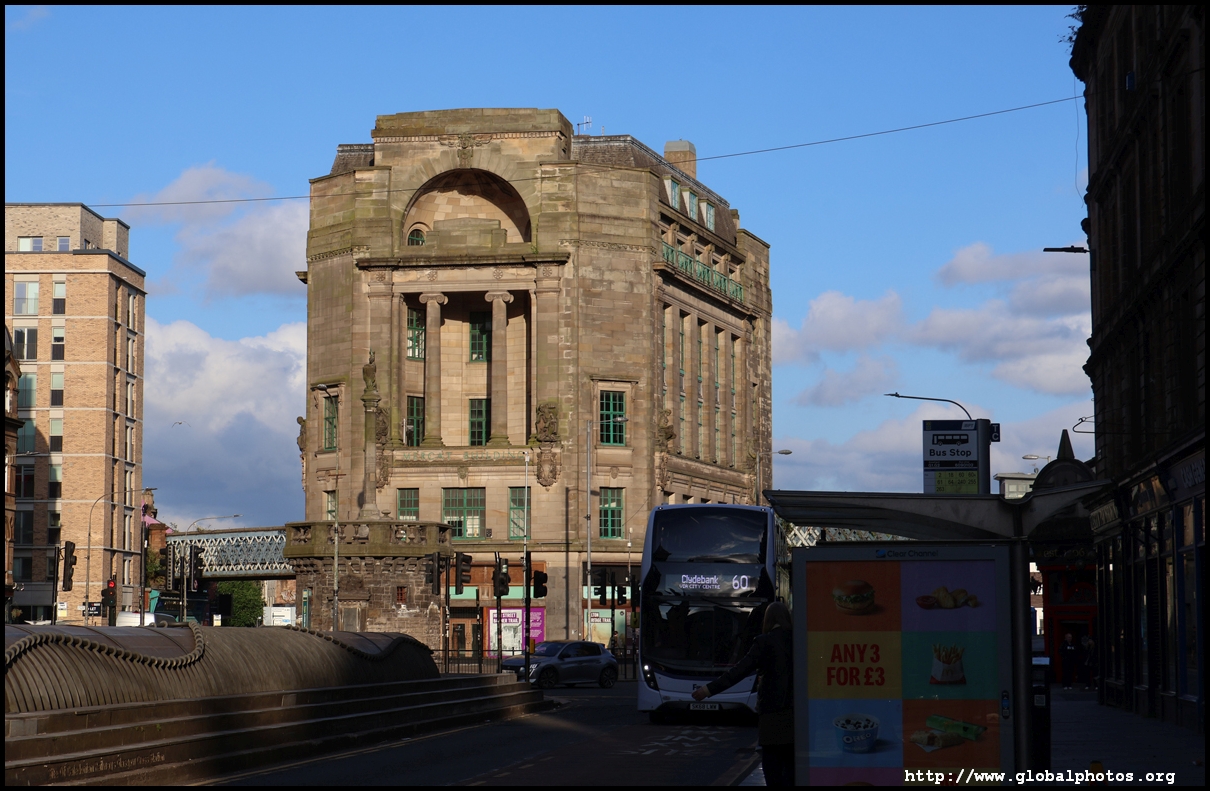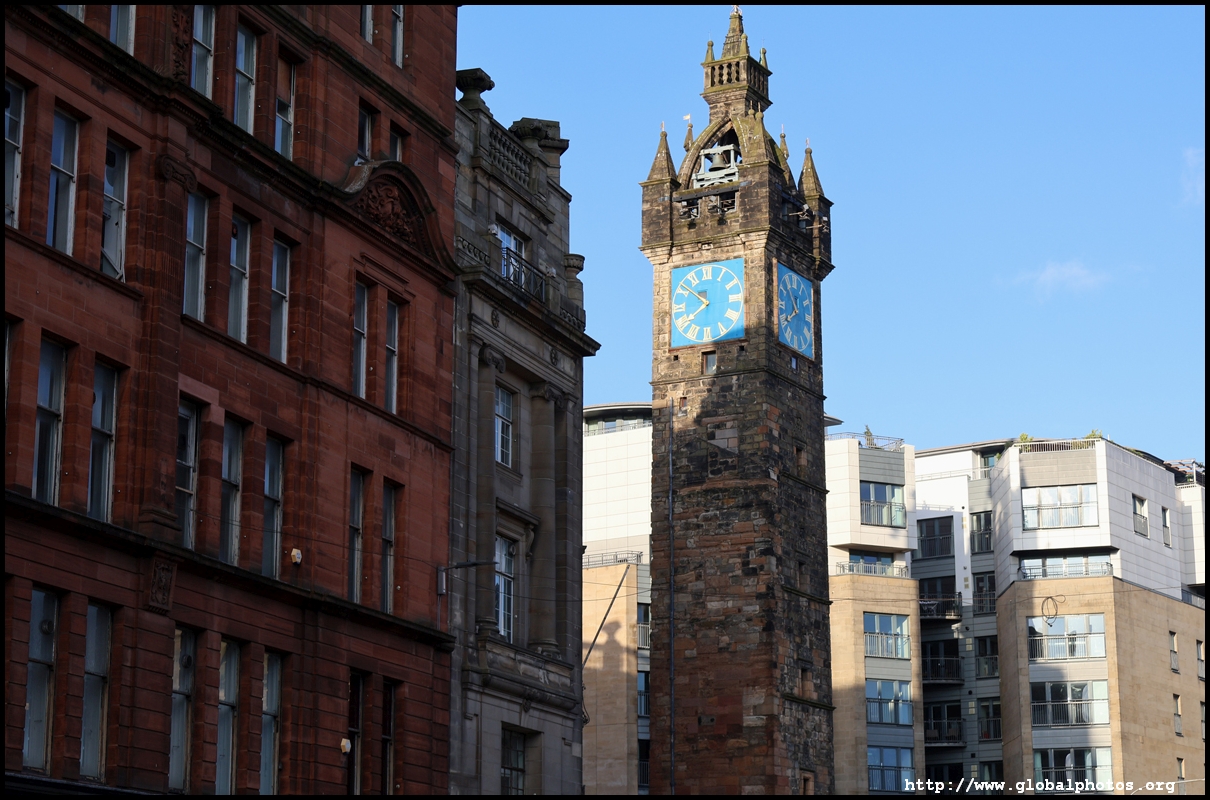Glasgow George Square & Argyle Street Photo Gallery
George Square was named after King George III and was laid out in 1781. The monumental building on the east side is the City Council headquarters, which was completed in 1888 under architect William Young's design. The square has been a popular place for left-wing demonstrations over the years.
Argyle Street is also a pedestrian shopping area, which ends as it changes name to Trongate heading east. The term "tron" refers to the beam with which trading goods were weighed when they arrived at the city's walls. This area was the city's trading and financial hub, and back in 1750, Trongate was only 1 of 13 streets in Glasgow.
While there are a number of familiar big brands here, there are also lots of signs the commercial environment is in decay, a big contrast to Buchanan Street.
A church was first built here in 1529 serving Catholics and Protestants. Its use changed over time, overseeing executions, holding meetings, home of the police and now a theatre. Tron Kirk is recognizable by its blue clock tower. It originally was part of the Tron building, which was set on fire in 1793 but the steeple survived. During the Industrial Revolution, this area deteriorated as the richer folks moved west. The Glasgow Theatre Club took over the building in 1980 and its facilities have improved since.
Tolbooth Steeple is the only surviving part of a town government structure built between 1626-1634 that was partially demolished in 1921. Only the square clock tower remains today, marking the entrance into Merchant City.
|
